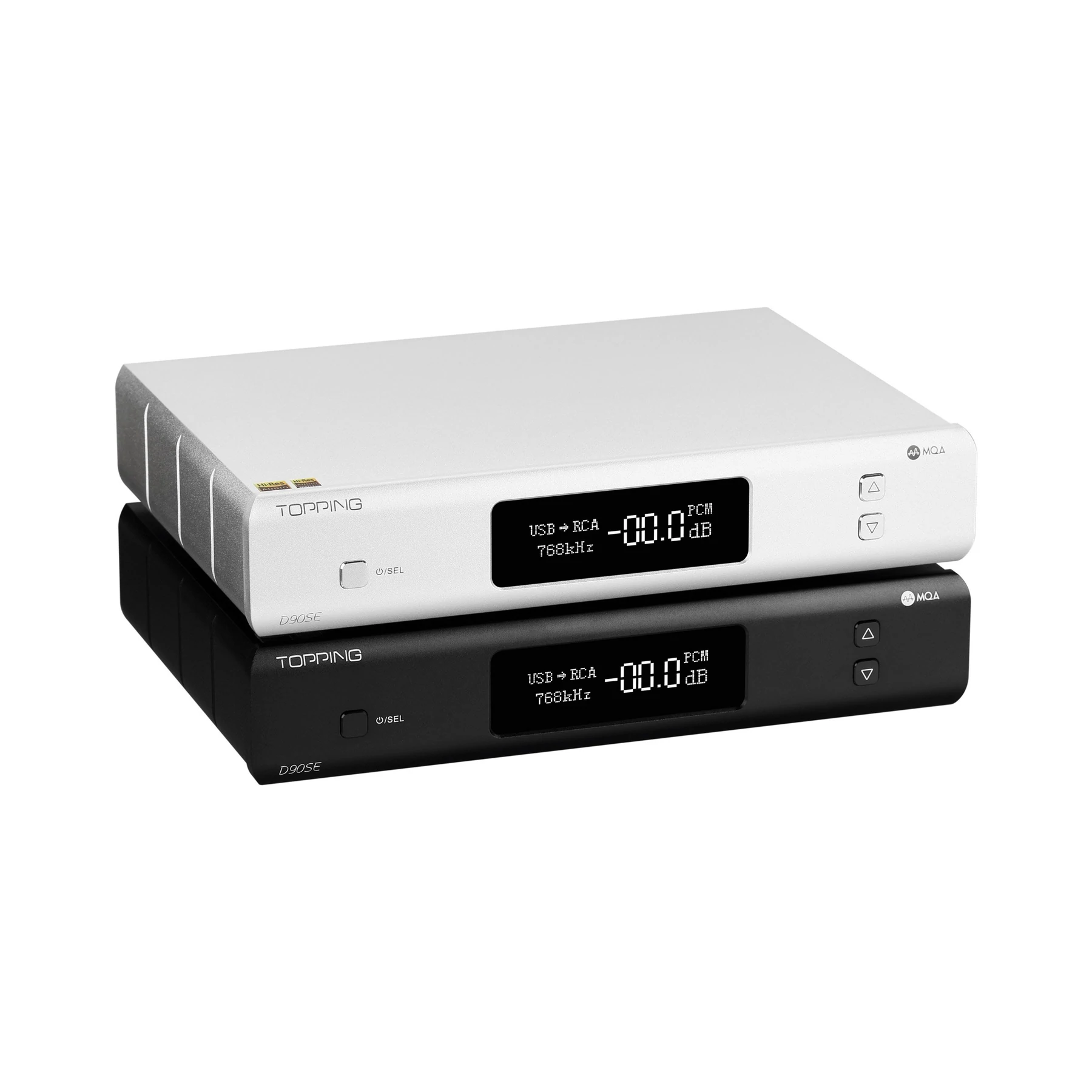
"Top $400 DAC Performance" - SoundNews on SMSL SU-9N
Note: This article is based upon the article "SMSL SU-9N DAC Review - No MQA? No problem!” made by Sandu Vitalie on his website SoundNews. It’s printed here in partnership with Sandu Vitalie. The review was originally posted on January 9th, 2022. You can check the the SMSL SU-9n here.
Intro
Some of you requested an SU-9n DAC review, and I’m ready to offer my final impressions about it. The SU-9n comes as an alternative to the regular SU-9, but without the MQA decoder or UAT Bluetooth decoder, and slashing the price to $400. But when it comes to user experience and sound performance, things went up just a little bit. Okay, folks, let’s check out what’s so interesting about it.
Sound quality overview
Sound-wise, the highest praise I can give to SMSL and to this particular unit is that it sounds good with every musical genre, and it has such a pleasing tonality that I believe careful amp matching isn’t really an issue anymore.
It seems that SMSL went with the same winning formula that they already applied to its twin brother, the SU-9, and to its bigger brother, the VMV D1se, and by that I mean boosted low-end delivery. That came as a huge surprise, considering its tiny size and, of course, its small capacitance. After connecting it to the firmware and the Hypsos power supply, I was surprised that my headphones didn’t lack mid-range presence. Their bass output was a little stronger. The bass response was quite complete from top to bottom. There was treble, but there weren’t any nasty bright spots or listening fatigue at the cost of sounding slightly smaller.
The sound stage wasn’t that impressive. It wasn’t really enveloping. I felt that musical notes were hitting an imaginary wall at some point, but, of course, that shouldn’t come as a surprise, considering its mid-level status. Of course, it has the legendary detail-retrieval that its twin brother has. So it wasn’t a problem spotting small nuances and subtleties. There are still quite a few limitations, but overall, I believe SMSL did a fantastic job, and all those technicalities that are important to me weren’t botched or overlooked. My preliminary impressions are quite positive, and, sincerely, it exceeded my expectations.
Transience
Moving on to transience, I’m not sure what ritual dances the SMSL engineers did while designing this unit, but clearly it wasn’t lacking in terms of speed and bass impact. For example, the Kennerton Rognir is quite a shapeshifting headphone. It can sound slightly mellow and gentle and ethereal, or impactful and visceral, depending on the amplifier that drives them and the source that feeds the amplifier. So when the SU-9n was connected to the firmware and Hypsos power supply, the dynamics just exploded. The bass impact was going much higher, so much so that I needed to lower the volume.
The SU-9n looks like a natural pugilist to me, always trying to raise those dynamics while never limiting the speed of sound. In many ways, it was meaner-sounding and more impactful than entry-level TOPPING and Gustard devices. On the other hand, it was a little raw, polished, a little aggressive-sounding. It worked slightly better with modern music and less so with mellow and gentle music, and that was most apparent with blues and jazz, because I couldn’t follow a drum solo that was deeper-sounding.
Detail retrieval
Moving on to detail-retrieval. I believe that this is easily the most important thing that a DAC should do, and this is where SU-9n stood out as being impressive. The sole job of a DAC is being correct when converting those zeros and ones, without altering the final outcome, and this is where the SU-9n felt like it was holding its chin up higher than usual. The ES9038 PRO and those smoother op amps made the whole experience not only highly-detailed but also quite organic and believable-sounding. My usual blues collection didn’t lack texture. There was still quite a lot of weight to that double bass, and the violins were still sending a shiver down my spine. This unit isn’t offering very powerful leading edges, so forget notes having sharp contours. On the plus side, its slightly elevated bass and mid-range region made my music livelier and more believable sounding.
SMSL knows exactly the limitations of this particular DAC chip, and I’m glad that they didn’t make it as dry-sounding as they did with the SU-8s. If you’re thinking of getting the SU-8s, please spend a little bit more and get the SU-9n instead, because it’s considerably better-sounding. When Incubus’ “Warning” started playing, I immediately started humming and grooving along, because it worked like magic for me. Its higher mid-range presence and a slight bump in the bass was exactly what I wanted to hear from an alternative rock track.
Soundstage
Moving on to the soundstage. Right off the bat, I had that aha moment. It didn’t sound so big, so layered-sounding to me, compared to some higher-priced DACs. If soundstage is important to you, I suggest getting the slightly more expensive VMV D1se. While the SU-9n didn’t really limit the air travel in any way, I just felt that the sounds weren’t really taking off and enveloping my entire body. It offered a medium-sized soundstage–not so big, not so small. It wasn’t really upfront or claustrophobic-sounding, and that was very apparent with loudspeakers and headphones alike. On the plus size, its limited sound stage sometimes could work to your advantage, depending on the music that you’re listening to.
Frequency response
Moving on to the frequency response. The SU-9n delivers a stronger bass output, and that’s really what differentiates it from a sea of entry-level delta sigma DACs. Personally, I find it more impressive, more powerful-sounding compared to the SU-8s, and if you’ve already got the funds for that device, please gather a little bit more and get the SU-9n instead, because it’s considerably more impressive. So, long story short, you’d be getting a clean undistorted bass that’s a little bit more powerful, a little bit more elevated. There’s more substance and weight down low, and with sub-bass or mid-bass, it gathered that in spades. Luckily, its mid-range delivery never felt dry or lifeless-sounding to me. It was just more natural-sounding compared to, say, the TOPPING D50s. I didn’t spot a single glare. I didn’t have listening fatigue. On the other hand, it was a little fuller-sounding, a little bolder-sounding, reminding me of the sound of their VMV D1se, which was going in the same direction of a pleasant effect with loudspeakers and headphones alike.
Conclusions
As for my conclusions, I don’t know if you’re aware, but the SU-9 was pretty much the best-selling SMSL device to date; however, there is a very strong anti-MQA movement happening. SMSL quickly responded to market demands by just removing the MQA decoder, the unnecessary UAT Bluetooth codec, while slashing $60 from its price, making the SU-9n one of the hottest SMSL products of 2022. SMSL was able to transform a linear and uber-transparent chipset into a sweeter and smoother-sounding digital creature, and I’m extremely happy experiencing such a complete package at such an affordable price. I don’t believe you can get a higher-performing DAC at $400, and that’s why this is receiving my golden stamp of approval.


